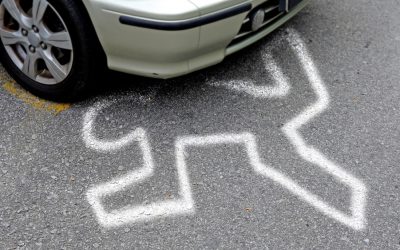If you weren’t driving a vehicle, you cannot be convicted of DUI. This makes the “no driving” defense one of the strongest defenses against DUI in some cases.
How does the no driving defense work?
The no driving defense simply asserts that you were not the person driving the vehicle, or that the vehicle was never driven at all. This defense does not bother to argue about your BAC level or how intoxicated you were; it is perfectly legal to sit in a car while intoxicated.
Typically, the no driving defense is used when:
- You were found asleep in a parked car, intoxicated, but you didn’t drive it
- You are the owner of the car, but someone else was driving it
- Someone reported you for driving erratically, and police came to your home where they found you intoxicated
- You were in an accident, and police arrested you simply because you were standing near the car, even though you did not drive it
Are police allowed to “assume” I was driving?
This is a trouble spot in the law. Most DUIs begin one of three ways:
- You are pulled over for violating a traffic law, and police suspect you’re intoxicated
- You are stopped at a DUI roadblock and found to be intoxicated
- You are involved in an accident, and either you admit to police that you were driving or witnesses tell police you were the driver
In all of these cases, police know that you were the one driving the vehicle, usually because they saw you drive. But what if they didn’t?
The law also allows the police to make an inference based on the facts at hand—in other words, a guess. For example, if they responded to a report of a car hitting a tree and they found you intoxicated in the driver’s seat, it would be reasonable to assume you drove the car. They can make arrests on these assumptions, but that does not mean they are right.
There are many possible scenarios where police would assume you were driving, whether you were or not:
- A car with your license plate was reported as a possible drunk driver. The police come to your home and you answer the door intoxicated.
- Police found you in your car asleep or resting, and the car was running.
- You are the only person in the car and no one else is around.
- You are standing next to your car after an accident.
Just because an officer makes this assumption does not mean it will hold up in court. The no driving defense argues that the officer’s assumption was wrong.
How effective is the no driving defense?
It is highly effective as long as your story matches up with the facts of the case. That means that you cannot simply lie and say you weren’t driving if you obviously were. For example, if you run off the road into a utility pole in your own car and no one else is around, it’s obvious that you drove the car.
It’s also important that you have not admitted to driving. If you already told officers or witnesses that you were driving your car, it’s very difficult to take this back and build a “no driving” defense. There would have to be a legitimate reason why you originally said something inaccurate.
How can I prove that I wasn’t driving?
Your DUI lawyer will help you build your case. The exact argument you make will depend on the circumstances of the arrest:
- If your car was moving, but you weren’t the driver, it helps substantially to be able to name the actual driver
- If you were found in a stopped or parked car, with no accident, the burden of proof is typically on the police; they have to prove you were driving. It is not illegal to sit in a car while inebriated, even with the engine running.
What kind of evidence can I use to prove my case?
Some of the evidence that can be helpful includes:
- Eyewitness testimony
- Video footage (such as from a security camera in the parking lot)
- An alibi (someone can vouch that you were somewhere else, not driving your car; or that you didn’t start drinking until after getting home)
Have you been charged with DUI? We can connect you with an experienced Los Angeles DUI lawyer and get you a FREE consultation. Fill out the form to the right or call (310) 896-2724 and get your free consultation today.






